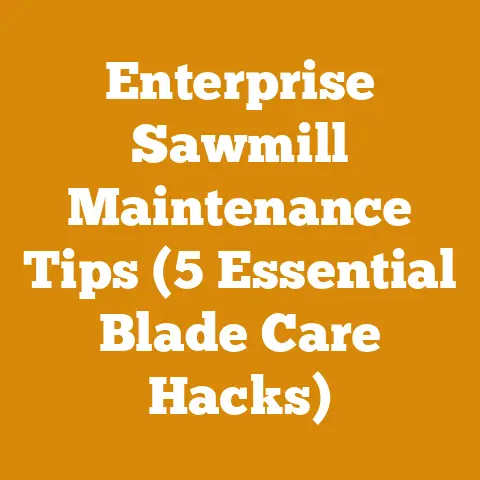Grass Kill Solutions (Selective Herbicide Tips for Hedge Care)
Okay, here we go.
Let’s dive into the world of selective herbicides and hedge care, but first, let’s think about our furry friends.
A Paw-sitive Start: Protecting Your Pets While Perfecting Your Hedges
As a seasoned woodworker and someone who spends a lot of time outdoors, I know how important it is to balance a beautiful landscape with the safety of our beloved pets.
I’ve got a golden retriever named Rusty who thinks my woodpile is his personal playground.
You see, a pristine hedge can dramatically enhance your property’s curb appeal.
But what happens when unwanted grasses start creeping in, messing up that clean, manicured look?
That’s where selective herbicides come in.
The challenge?
Using them responsibly, especially when you have pets who might be tempted to investigate every nook and cranny of your garden.
This article is all about understanding how to use selective herbicides effectively to kill grass around your hedges without harming the hedges themselves, or worse, your pets.
We’ll explore the science behind these products, best practices for application, and, most importantly, how to keep your furry, scaly, or feathered companions safe throughout the process.
Understanding the Enemy: Why Grass Invades Hedges
Before we get into the herbicide specifics, let’s talk about why grass loves to invade our hedges in the first place.
It’s not just random chance; there are several factors at play.
- Sunlight: Hedges, especially when young, can be a bit sparse at the base, allowing sunlight to reach the soil.
Grass seeds are opportunistic and thrive in sunny spots. - Water Runoff: Irrigation systems or rainfall often cause water to pool around the base of hedges, creating a moist environment that grass loves.
- Nutrient Competition: Grass is a master at sucking up nutrients from the soil.
This can weaken your hedges, making them more susceptible to disease and pests. - Lack of Mulch: Without a proper layer of mulch, the soil is exposed, making it easier for grass seeds to germinate.
- Wind Dispersal: Grass seeds are lightweight and easily carried by the wind, landing right where you don’t want them.
My own experience with this is pretty clear.
I planted a beautiful row of boxwoods along my driveway a few years back.
I thought I’d done everything right – good soil, regular watering, and careful pruning.
But within a few months, grass started popping up everywhere.
It was a constant battle to keep it at bay, and I knew I needed a more effective solution than just hand-pulling.
What are Selective Herbicides? The Science Behind the Solution
Selective herbicides are designed to target specific types of plants while leaving others unharmed.
In our case, we want to kill the grass without damaging our hedges.
But how do they work?
- Mode of Action: Selective herbicides work by interfering with specific metabolic pathways or enzymes found in grasses but not in broadleaf plants (like most hedges).
This allows them to kill the grass while leaving the hedges relatively untouched. - Systemic vs.
Contact:- Systemic herbicides are absorbed by the plant and transported throughout its system, killing it from the roots up.
These are generally more effective for perennial grasses that have extensive root systems. - Contact herbicides only kill the parts of the plant they come into direct contact with.
These are better for annual grasses and require thorough coverage.
- Systemic herbicides are absorbed by the plant and transported throughout its system, killing it from the roots up.
- Active Ingredients: Common active ingredients in selective herbicides for grass control include:
- Sethoxydim: Often found in products like Poast or Grass-B-Gon.
It’s a systemic herbicide that’s effective on many types of grasses. - Clethodim: Another systemic herbicide, often used in agricultural settings but also available for home use.
- Fluazifop-p-butyl: A systemic herbicide that’s particularly effective on perennial grasses.
- Sethoxydim: Often found in products like Poast or Grass-B-Gon.
Choosing the Right Herbicide: A Balancing Act
Selecting the right herbicide is crucial for success.
Here’s what I consider when making my choice:
- Type of Grass: Identify the type of grass you’re dealing with.
Some herbicides are more effective on certain grasses than others. - Type of Hedge: Research the sensitivity of your hedge species to different herbicides.
Some hedges are more tolerant than others. - Application Method: Consider how you’ll be applying the herbicide.
Spot treatments are generally safer than broadcast applications. - Environmental Factors: Wind, temperature, and rainfall can all affect the effectiveness of the herbicide.
- Pet Safety: This is the most important factor!
Choose herbicides with lower toxicity and follow all safety precautions meticulously.
Data Point: A study by the University of California, Davis, found that glyphosate-based herbicides (non-selective) are significantly more toxic to pets than sethoxydim-based herbicides (selective) when ingested.
This highlights the importance of choosing the right herbicide for your situation.
Safety First: Protecting Your Pets from Herbicide Exposure
Now, let’s get to the heart of the matter: protecting your pets.
Here are my top tips for using selective herbicides safely around animals:
- Read the Label: I can’t stress this enough.
The product label is your bible.
It contains crucial information about application rates, safety precautions, and first aid measures. - Choose the Right Product: Opt for herbicides with lower toxicity levels and shorter re-entry periods (the time you need to keep pets off the treated area).
- Apply Carefully: Use a sprayer with a nozzle that allows for precise application.
Avoid spraying on windy days to prevent drift. - Spot Treat: Instead of spraying the entire area, target individual grass clumps.
This minimizes the amount of herbicide used and reduces the risk of exposure. - Water In: After applying the herbicide, water the treated area lightly.
This helps the herbicide adhere to the grass and reduces the risk of it being tracked indoors. - Keep Pets Away: Keep pets off the treated area for the recommended re-entry period.
This is usually 24-48 hours, but always check the label. - Create a Barrier: If possible, create a temporary barrier around the treated area to prevent pets from accessing it.
- Store Herbicides Safely: Store herbicides in a locked cabinet or shed, out of reach of children and pets.
- Clean Up Thoroughly: After using the herbicide, clean your sprayer and any other equipment thoroughly.
Dispose of any leftover herbicide properly. - Monitor Your Pets: Watch your pets for any signs of herbicide exposure, such as vomiting, diarrhea, lethargy, or loss of appetite.
If you suspect your pet has been exposed, contact your veterinarian immediately.
Personal Story: I once made the mistake of not reading the label carefully enough and accidentally sprayed a bit too much herbicide around my hedges.
Rusty, being the curious dog he is, immediately started sniffing around the area.
I panicked and immediately washed his paws with soap and water.
Thankfully, he was fine, but it was a wake-up call.
Now, I’m extra cautious when using any chemicals in the yard.
Application Techniques: Precision is Key
The way you apply the herbicide is just as important as the product you choose.
Here are some tips for precise application:
- Spot Treatment with a Handheld Sprayer: This is my preferred method for small areas.
It allows you to target individual grass clumps without spraying the entire hedge. - Shielded Sprayer: A shielded sprayer has a hood that prevents the herbicide from drifting onto the hedge.
This is a good option for larger areas. - Paintbrush Application: For very small areas or sensitive hedges, you can apply the herbicide with a paintbrush.
This allows for extremely precise application. - Granular Herbicides: Some selective herbicides are available in granular form.
These are generally less effective than liquid herbicides, but they can be useful for preventing grass from germinating in the first place.
Case Study: Saving My Neighbor’s Azaleas
My neighbor, Sarah, was having a terrible time with grass invading her beautiful azalea bushes.
She’d tried everything – hand-pulling, mulching, even vinegar solutions.
Nothing seemed to work.
She was about to give up and replace the azaleas when she asked me for help.
I assessed the situation and determined that the grass was a perennial species with deep roots.
I recommended a systemic selective herbicide containing sethoxydim.
I carefully applied the herbicide using a handheld sprayer, making sure to avoid spraying the azaleas.
I also advised her to mulch the area around the azaleas to prevent future grass growth.
Within a few weeks, the grass started to die back.
Sarah was thrilled!
She continued to monitor the area and spot-treat any new grass that emerged.
Her azaleas are now thriving, and she’s a firm believer in the power of selective herbicides.
Wood Processing Connection: Mulch as a Weed Suppressant
As a woodworker, I always have plenty of wood chips and sawdust on hand.
These materials make excellent mulch!
Mulch not only helps retain moisture in the soil but also acts as a barrier to prevent grass seeds from germinating.
- Types of Mulch:
- Wood Chips: These are great for suppressing weeds and adding organic matter to the soil.
- Sawdust: Use sawdust sparingly, as it can compact over time and inhibit drainage.
- Pine Straw: This is a good option for acidic-loving plants like azaleas and rhododendrons.
- Shredded Bark: This is a long-lasting mulch that’s resistant to decomposition.
Data Point: A study by Oregon State University found that a 4-inch layer of wood chip mulch can reduce weed germination by up to 90%.
Long-Term Hedge Care: Prevention is Better Than Cure
Once you’ve gotten rid of the grass, it’s important to take steps to prevent it from coming back.
Here are some tips for long-term hedge care:
- Mulch Regularly: Replenish the mulch layer every year to maintain its effectiveness.
- Water Properly: Water your hedges deeply and infrequently to encourage deep root growth.
- Fertilize Regularly: Feed your hedges with a balanced fertilizer to keep them healthy and vigorous.
- Prune Carefully: Prune your hedges regularly to maintain their shape and density.
- Monitor for Pests and Diseases: Keep an eye out for any signs of pests or diseases and treat them promptly.
- Consider Pre-emergent Herbicides: These herbicides prevent grass seeds from germinating in the first place.
They can be a good option for preventing future grass infestations.
However, they should be used with caution, as they can also harm desirable plants.
Wood Species Considerations: Choosing the Right Hedge
The type of hedge you choose can also affect its susceptibility to grass invasion.
Some hedges are denser and more shade-tolerant than others, making it harder for grass to grow beneath them.
- Boxwood: A classic choice for formal hedges. It’s dense, slow-growing, and relatively shade-tolerant.
- Privet: A fast-growing hedge that’s easy to maintain.
It’s not as shade-tolerant as boxwood, but it can still tolerate some shade. - Arborvitae: A evergreen hedge that provides year-round privacy. It’s relatively low-maintenance and drought-tolerant.
- Yew: A shade-tolerant hedge that’s often used for topiary.
It’s slow-growing and requires regular pruning.
Data Point: A study by the University of Florida found that hedges with a density rating of 8 or higher (on a scale of 1 to 10) were significantly less likely to be invaded by grass than hedges with a lower density rating.
Cost-Effectiveness: Balancing Budget and Results
Using selective herbicides can be a cost-effective way to control grass around your hedges, especially compared to the labor-intensive task of hand-pulling.
However, it’s important to consider the cost of the herbicide, the application equipment, and the time you’ll spend applying it.
- DIY vs.
Professional: Consider whether you want to tackle the job yourself or hire a professional.
Hiring a professional will cost more upfront, but it can save you time and effort in the long run. - Bulk Purchases: If you have a large area to treat, consider buying herbicide in bulk to save money.
- Compare Prices: Shop around and compare prices from different retailers to find the best deal.
Actionable Takeaways: Your Hedge Care Checklist
Okay, let’s wrap things up with some actionable takeaways you can use to keep your hedges grass-free and your pets safe:
- Identify the grass: Determine the type of grass you’re dealing with.
- Choose the right herbicide: Select a selective herbicide that’s effective on the grass but safe for your hedges and pets.
- Read the label: Follow all instructions and safety precautions on the product label.
- Apply carefully: Use a sprayer with a nozzle that allows for precise application.
- Keep pets away: Keep pets off the treated area for the recommended re-entry period.
- Mulch regularly: Replenish the mulch layer every year.
- Water properly: Water your hedges deeply and infrequently.
- Fertilize regularly: Feed your hedges with a balanced fertilizer.
- Monitor for pests and diseases: Keep an eye out for any signs of pests or diseases.
- Store herbicides safely: Store herbicides in a locked cabinet or shed.
Final Thoughts: A Beautiful Landscape, Safely Achieved
Maintaining a beautiful landscape doesn’t have to come at the expense of your pets’ safety.
By understanding the science behind selective herbicides, following best practices for application, and taking extra precautions to protect your furry friends, you can achieve a pristine hedge without putting your pets at risk.
And remember, a little bit of planning and preparation can go a long way.
So, grab your gloves, read the label, and get ready to transform your hedges into the envy of the neighborhood.
Just make sure Rusty (or your own furry companion) is safely inside while you’re at it!
It’s all about balance, my friends, and a little bit of elbow grease.
Happy gardening!






